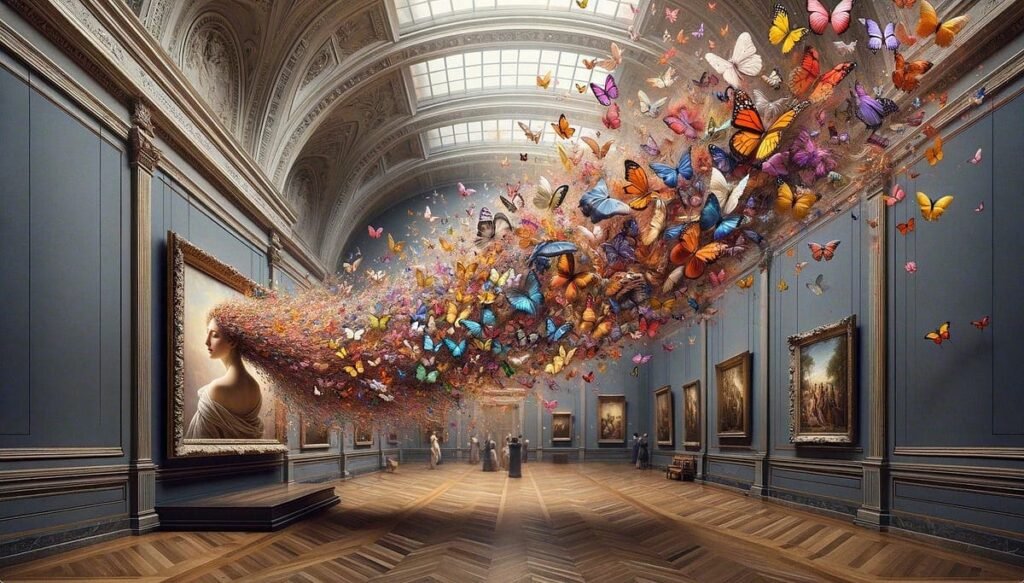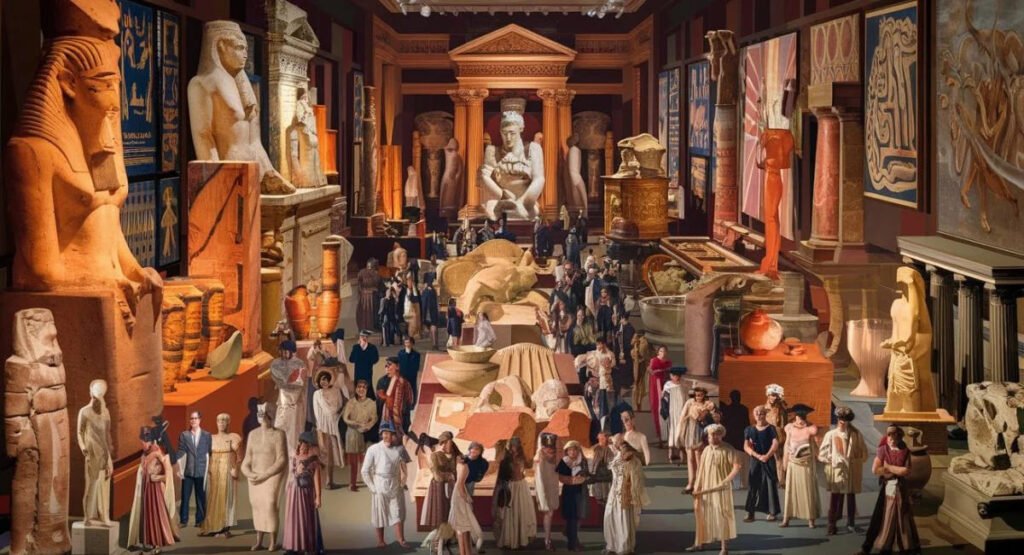Introduction
Imagine on foot through the dimly lit corridors of a forgotten civilization, in which each stone, every wall, and every artifact whispers testimonies of a bygone era. This is the arena of historical artz—a term that embodies the creative expressions of the earliest human societies. Ancient artz is not just a glimpse into the beyond; it is an effective connection to our ancestors, reflecting their ideals, daily existence, and the mysteries in their existence.
The Origins: Where It All Began
The concept of historic artz takes us back to the cradle of civilization, in which art turned into no longer merely a shape of expression but a way of lifestyle. From the prehistoric cave artwork in Lascaux, France, to the elaborate carvings of Mesopotamia, historic artz has been discovered in each nook of the sector. Each piece tells a unique tale, capturing the essence of the lifestyle and the people who created it.
Did You Know? The oldest recognized piece of art, an easy zigzag engraving on a shell, dates again more than 500,000 years, discovered in Indonesia!
Ancient Artz Across Civilizations: A Glimpse into Diverse Cultures
1. Egyptian Artz: The Realm of the Pharaohs
Egyptian artz is synonymous with grandeur and spirituality. The towering pyramids, the enigmatic Sphinx, and the problematic hieroglyphs are all part of this historical lifestyle’s inventive legacy. Egyptian artz were heavily motivated by their beliefs in the afterlife, with an awful lot of their paintings committed to ensuring a prosperous adventure for the deceased.
Fact: The Great Pyramid of Giza was in the beginning protected with casing stones made of notably polished Tura limestone, which contemplated the sun’s mild and made the pyramid shine like a gem.
2. Greek Artz: The Birth of Western Aesthetics
Ancient Greek artz laid the foundation for Western art. With its emphasis on humanism, stability, and sharing, Greek artz celebrated the beauty of the human shape. The sculptures of gods, athletes, and philosophers from this era stay iconic, influencing infinite generations of artists.
Fact: The statue of Zeus at Olympia, one of the Seven Wonders of the Ancient World, was made of ivory and gold and stood over 40 feet tall.
3. Mesopotamian Artz: The Art of the First Cities
In the land between the Tigris and Euphrates rivers, the Mesopotamians pioneered many components of civilization, which included art. Their ziggurats, statues, and cylinder seals monitor a society deeply related to its gods and rulers.
Fact: The Code of Hammurabi, one of the earliest regarded criminal codes, was inscribed on a stone stele with a bas-comfort of the king receiving the legal guidelines from the god Shamash.
4. Indian Artz: The Sacred and the Sensual
Indian artz is a harmonious combo of spirituality and sensuality. From the elaborate carvings of the temples in Khajuraho to the serene Buddha statues of the Gupta length, Indian artz reflects the wealthy tapestry of its cultural and religious heritage.
Fact: The Ajanta Caves, a UNESCO World Heritage Site, reside a number of the oldest and most excellent Buddhist works of art and sculptures, dating back to the 2nd century BCE.
5. Chinese Artz: The Elegance of the Celestial Empire
Ancient Chinese artz is marked with the aid of its elegance and sophistication, with a deep connection to nature and philosophy. The terracotta navy of the First Emperor, the serene landscapes of Song Dynasty artwork, and the sensitive porcelain wares are only a few examples of this wealthy subculture.
Fact: The Terracotta Army, buried with China’s first emperor, Qin Shi Huang, consists of over 8,000 squaddies, hundred thirty chariots, and 670 horses, every uniquely crafted with distinctive features.

The Purpose: Why Was Ancient Artz Created?
Ancient artz served more than one function within the societies that created it:
- Religious and Spiritual Significance: Much of historical artz turned into created to honor gods, spirits, and ancestors, regularly utilized in rituals and ceremonies.
- Documentation of Daily Life: Art became additionally a manner to report daily sports, from hunting scenes in caves to depictions of royal ceremonies and battles.
- Expression of Power and Status: Rulers and elites used artwork to show their energy and wealth, commissioning grand monuments, statues, and different works.
- Preservation of Stories and Myths: Many historic artworks tell memories, whether or not of gods and heroes, ancient occasions, or moral lessons.
Ancient Artz Techniques: Mastery Over Mediums
Ancient artists had been no longer just creative; they have been masters of their craft, employing plenty of techniques and materials to create their works:
- Carving and Sculpture: Stone, wood, and steel had been typically used for developing sculptures and carvings, with artists displaying extremely good talent in detail and percentage.
- Painting and Mural Work: Early artists used herbal pigments to create colorful works of art and paintings on walls, pottery, and other surfaces.
- Weaving and Textile Art: Many historic societies, just like the Egyptians and Peruvians, have been skilled in fabric arts, developing difficult styles and designs.
- Pottery and Ceramics: Pottery was practical and decorative, with historic artisans often decorating their work with complex designs and motifs.
Read More About Ancient Artz: A Journey Through the Artistic Expressions of Antiquity
The Legacy of Ancient Artz: Influences on Modern Art
The impact of ancient artz can still be felt these days. Modern artists regularly draw suggestions from the strategies, patterns, and subject matters of historical civilizations. Whether it’s the symmetry of Greek sculptures, the spirituality of Indian artz, or the storytelling of Egyptian hieroglyphs, historical artz maintains to encourage and influence.
FAQs: Common Questions About Ancient Artz
Q1: What makes ancient artz different from modern-day artwork?
A1: Ancient artz is generally more targeted on spiritual, spiritual, and societal subject matters, whereas modern-day artwork frequently explores non-public expression, abstract concepts, and a broader variety of topics.
Q2: How were ancient works of art preserved?
A2: Many historical artistic endeavors were preserved via herbal methods, which include being buried underground or in tombs, while others have been intentionally preserved with the aid of the civilizations that created them.
Q3: Why is historical artz vital today?
A3: Ancient artz affords precious insights into the cultures, beliefs, and everyday lives of early human societies. It allows us to recognize our shared history and the improvement of human civilization.
Q4: Can I see examples of ancient artz in museums?
A4: Yes, many museums around the world, such as the British Museum, the Louvre, and the Metropolitan Museum of Art, have good-sized collections of historic artz.
Conclusion: The Timeless Beauty of Ancient Artz
The international of historical artz is sizable and without end captivating. It’s an adventure through time, presenting a glimpse into the lives, beliefs, and creativity of our ancestors. Each artifact, each piece of art, is a testament to the enduring human spirit and its innate choice to create, talk, and join throughout the ages.
